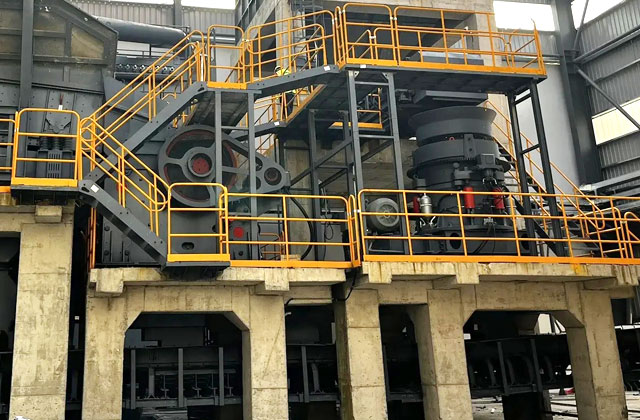The design of a stone crusher involves multiple components and processes to ensure efficient and reliable operation. It must be optimized to handle a variety of raw materials, such as limestone, granite, basalt, or ores, while providing high throughput, low maintenance, and energy efficiency.

1. Crusher Type Selection
There are several types of stone crushers, each designed for specific crushing processes. The selection depends on the required output size, feed material, and production capacity. The most common types are:
- Jaw Crushers: Ideal for primary crushing, used to reduce large pieces of material to smaller sizes. They are durable, with a simple design.
- Cone Crushers: Best for secondary or tertiary crushing, offering high throughput and fine output.
- Impact Crushers: Used for shaping the material, these crushers provide high reduction ratios.
- Hammer Crushers: Suitable for soft to medium-hard materials, they provide high reduction ratios and are used in mining and recycling.
The combination of these crushers can be used in a crushing plant to meet specific product requirements.
2. Feed Hopper and Jaw Design
The design begins with the feed hopper, which feeds raw material into the crusher. The hopper is usually equipped with a vibration system to ensure a constant flow of material into the crusher.
The jaw of a jaw crusher is designed with two jaws—one stationary and one movable. The stationary jaw is fixed, while the movable jaw oscillates to crush the material between them. The shape, size, and material of the jaw plates are carefully selected to optimize performance and durability.
For example, high-strength steel is commonly used for jaw plates to resist wear and tear. The jaw’s angle, also known as the nip angle, influences the feed size and efficiency. A wider angle allows for larger feeds but may reduce crushing efficiency.
3. Crushing Chamber and Cone Design
In cone crushers, the crushing chamber design is crucial for efficient operation. The mantle and concave are the main components that provide the crushing force. The mantle moves up and down, crushing material between itself and the stationary concave.
The design of the cone’s chamber should enable the material to be crushed at various stages. For fine material, the chamber should have a smaller gap, whereas a wider gap is required for coarse materials. Additionally, anti-wear materials like manganese steel are used to prevent rapid wear.
4. Drive Mechanism and Motor
The drive mechanism converts the energy from the motor to the crushing components. It often consists of an electric motor, pulley, V-belt, and gearbox. Motors are usually chosen based on the power requirements of the crusher and the material being processed. Motors range from 5 HP for smaller crushers to several hundred horsepower for larger machines.
Variable speed drives may also be integrated for more precise control over the crushing process. This helps adjust crusher speeds to optimize output and reduce energy consumption.
5. Screening and Separation
Post-crushing, the material often passes through a screening system, which separates different sized products. Vibrating screens are used for this purpose, where the material is separated by size. The screens can have different mesh sizes depending on the desired output size. Secondary crushers may be needed to produce specific gradations.
6. Material Handling Systems
After the material is crushed and screened, it is typically conveyed to storage piles or directly into a processing plant. Belt conveyors, elevators, and chutes are commonly used for material transport. These systems must be designed with safety, reliability, and ease of maintenance in mind.
7. Hydraulic System and Automation
To improve the overall performance of a stone crusher, many modern designs incorporate hydraulic systems. These systems allow for easy adjustment of the crusher settings, like opening and closing the gap between the jaw plates, or adjusting the position of the cone’s mantle. Hydraulic systems also enable the crusher to clear any blockage automatically, enhancing uptime.
Additionally, automation can be integrated into the system to monitor and control various parameters, such as feed rate, power consumption, and crusher wear. This reduces human error and increases the efficiency of the operation.
8. Safety Features
Safety is crucial in stone crusher design. These machines include safety features such as:
- Emergency stop switches.
- Overload protection systems to prevent damage from uncrushable materials.
- Dust control systems like water sprayers or dust collectors to minimize air pollution.
A well-designed stone crusher should be robust, efficient, and user-friendly. The various components—crusher type, chamber design, motor, drive mechanism, screening systems, and safety measures—work together to achieve high crushing capacity, consistent output size, and minimal downtime. By focusing on reliability, energy efficiency, and ease of maintenance, a stone crusher can provide long-term service in demanding mining and construction environments.

